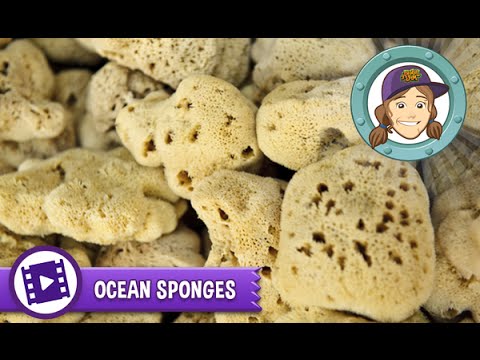What Are Kitchen Sponges Made Of?

What are kitchen sponges made of? Manufacturers usually make kitchen sponges out of cellulose, a natural substance obtained from wood pulp, and synthetic foam. They combine these materials to produce a long-lasting, absorbent instrument commonly used for dishwashing and cleaning worktops.
Kitchen sponges are an essential cleaning tool in most households, providing a convenient and effective way to tackle everyday messes and spills. Manufacturers carefully select materials like cellulose and synthetic foam for making kitchen sponges to ensure maximum absorbency and durability.
Understanding the composition of kitchen sponges can help consumers make informed choices when selecting cleaning products for their homes. We will explore the materials used in kitchen sponges, their properties, and the factors to consider when choosing the right sponge for your cleaning needs.

Kitchen Sponges: An Everyday Mystery
Kitchen sponges are a common item found in almost every household, but have you ever wondered what they are made of? These everyday cleaning tools use a variety of materials that make them effective at cleaning dishes and surfaces. Most kitchen sponges use a porous material like cellulose, which comes from plant fibers. This allows the sponge to absorb water and soap, making it ideal for scrubbing away dirt and grime. Additionally, some sponges may have a layer of abrasive material, such as nylon or polyester, on one side to help with tougher stains. The ubiquity of kitchen sponges is a testament to their usefulness in our daily lives. So, the next time you reach for a sponge to tackle your dirty dishes, you can appreciate the curiosity behind their composition.
Diving Into Sponge Materials
Manufacturers establish kitchen sponges from a range of natural and synthetic materials. They collect real sponges from the ocean and make synthetic sponges from man-made materials.
Common raw materials used in the production of sponges include cellulose, polyester, and polyurethane. Manufacturers produce cellulose sponges from plant fibers, making them biodegradable and ecologically friendly. Polyester sponges, on the other hand, are durable and long-lasting. Polyurethane sponges are highly absorbent and are often used for heavy-duty cleaning tasks. When choosing between natural and synthetic sponges, it’s important to consider factors such as durability, eco-friendliness, and intended use. Ultimately, the choice depends on personal preference and specific cleaning needs.
Natural Sponges: Harvested From The Sea
Manufacturers often employ cellulose, a natural substance made from wood pulp, to produce kitchen sponges. They frequently combine cellulose and synthetic elements to improve the sponges’ absorbency and durability.
Natural sponges, on the other hand, are harvested from the sea. The process involves divers collecting the sponges from the ocean floor, followed by cleaning and processing to remove debris and organic matter.
While natural sponge production can have a lower environmental impact compared to synthetic sponge manufacturing, it’s essential to consider the sustainability of harvesting practices to ensure the long-term health of marine ecosystems.
Synthetic Sponges: A Product Of Innovation
Ingredients in Synthetic Sponges include cellulose, plant-based fibers, and antimicrobial agents. The Manufacturing Process involves mixing ingredients, shaping the sponge, and adding colorants. Synthetic sponges are durable, absorbent, and cost-effective cleaning tools.
Shapes And Textures: The Making Of A Sponge
A kitchen sponge is an essential tool for cleaning dishes and surfaces. But have you ever wondered what they are made of and how they are designed for usability? Let’s take a closer look.
Sponge manufacturers often use cellulose, a natural substance made from wood pulp, as well as synthetic fibers like polyester or nylon. The combination of these materials creates a durable and absorbent sponge.
Design Considerations For Usability
When designing a sponge, usability is a key consideration. The size and shape of the sponge should fit comfortably in the hand and be easy to maneuver. The texture should be effective at scrubbing and cleaning, without scratching delicate surfaces.
Techniques To Create Different Textures
To create different textures, manufacturers use various techniques. For example, some sponges have a wavy texture that helps to remove stubborn stains, while others have a softer texture for gentler cleaning. Some sponges even have a scrubber on one side for tougher cleaning tasks.
Overall, the design and texture of a kitchen sponge play an important role in its effectiveness and usability. By understanding the materials and techniques used to create sponges, you can choose the best one for your cleaning needs.
Antibacterial And Eco-friendly Options
Manufacturers typically use a combination of plant-based cellulose and synthetic materials like polyurethane foam to make yellow kitchen sponges. They design these sponges to be absorbent, durable, and highly effective for cleaning dishes and kitchen surfaces.
| Sponges are typically made of cellulose, a biodegradable material. |
| Some sponges incorporate antimicrobial elements for added hygiene. |
| New eco-friendly sponges feature sustainable and recyclable materials. |
The Life Cycle Of A Kitchen Sponge
Most manufacturers make kitchen sponges from cellulose, a natural material derived from wood pulp. The production process involves mixing cellulose with other materials, such as hemp fibers or synthetic sponges, to create the sponge’s texture and durability. After that, producers treat the sponges with antimicrobial chemicals to prevent germs and mold from forming.
Once used, a sponge may be cleaned by microwaving or boiling. It’s important to replace sponges regularly to prevent bacterial buildup. Many sponges can be composted, while others should be thrown. By following these tips, you can make the most of your kitchen sponges while minimizing waste.
Keeping Sponges Clean And Sanitary
Kitchen sponges are typically made of cellulose, a natural material derived from wood pulp. Some sponges also contain synthetic materials like polyester.
To keep sponges clean, regularly wash them with hot, soapy water and sanitize them with bleach or vinegar solutions.
Effective cleaning methods for sponges include microwaving them or running them through the dishwasher.
It’s important to replace your sponge every 1-2 weeks to prevent the buildup of harmful bacteria.
Future Of Sponges: Biodegradability And Innovation
Kitchen sponges are typically made of cellulose, plant-based materials, and synthetic fibers.
Advancements in biodegradable sponges focus on eco-friendly materials and sustainable production.
Future innovations aim to enhance durability, absorbency, and antimicrobial properties.
Frequently Asked Questions
Are Kitchen Sponges Made Of Real Sponges?
No, manufacturers do not make kitchen sponges from real sponges. Instead, they typically use synthetic materials for cleaning purposes.
What Are Washing-Up Sponges Made Of?
Manufacturers typically make washing-up sponges from cellulose, a natural material derived from wood pulp. They also contain synthetic fibers for added durability and absorbency.
What Are Yellow Kitchen Sponges Made Of?
Manufacturers typically use a combination of plant-based cellulose and synthetic materials like polyurethane foam to make yellow kitchen sponges. They design these sponges to be absorbent, durable, and highly effective for cleaning dishes and kitchen surfaces.
What Are The Disadvantages Of Cellulose Sponges?
Cellulose sponges have a few disadvantages. They tend to deteriorate quickly, leaving behind bits of sponge. They can also trap bacteria and other germs, leading to unpleasant odors. Additionally, cellulose sponges may scratch delicate surfaces.
Conclusion
Understanding the materials in kitchen sponges is crucial for safe and effective cleaning. From cellulose to synthetic fibers, sponges come in various compositions. Being mindful of these components can help you choose the right sponge for your kitchen needs. Make informed decisions for a cleaner, healthier home.






